Custom CTF Platforms: Part 2
This is part 2 of the Custom CTF Platforms posts, where I explain some of the features and mistakes I made in the CTF platforms I have created
The Newest Platform
This platform was created about 2 years after my first platform, my friends and I had messed with a few other versions in between these two, however this one contains most of the features of all the platforms combined. When I started this version, CTFd 1.0 still hadn’t been released yet, I don’t exactly remeber correctly if ctfs were using a beta version of CTFd but I would imagine so.
My orginal team “Some Assembly Required” all graduated high school and we slowly stopped playing ctfs together and I did pretty much all the development for this final version, however my teammates helped out a lot in the prior version so I luckly did not have to do as much front end development.
Since I was mostly working alone, I neglected good development practices and only made 3 commits.
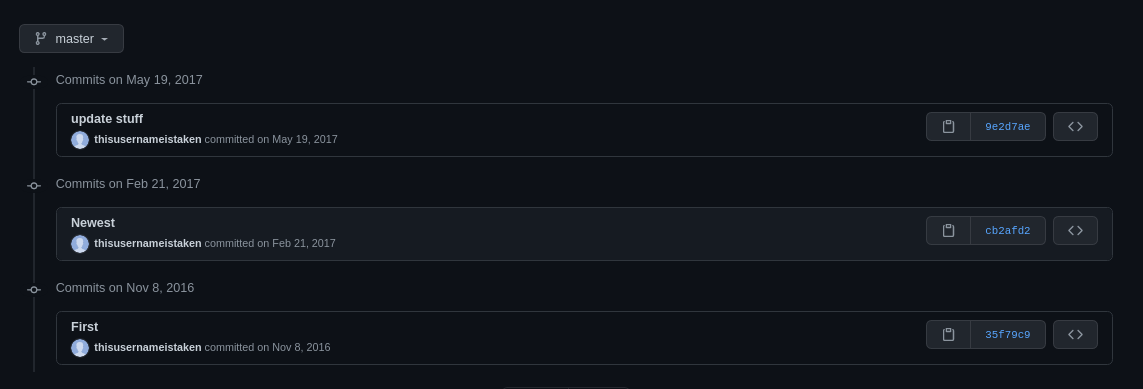
Features
Because most of the design was created as a group with my teammates, I think the overall design looks much better than the orginal blue theme.
Main Page
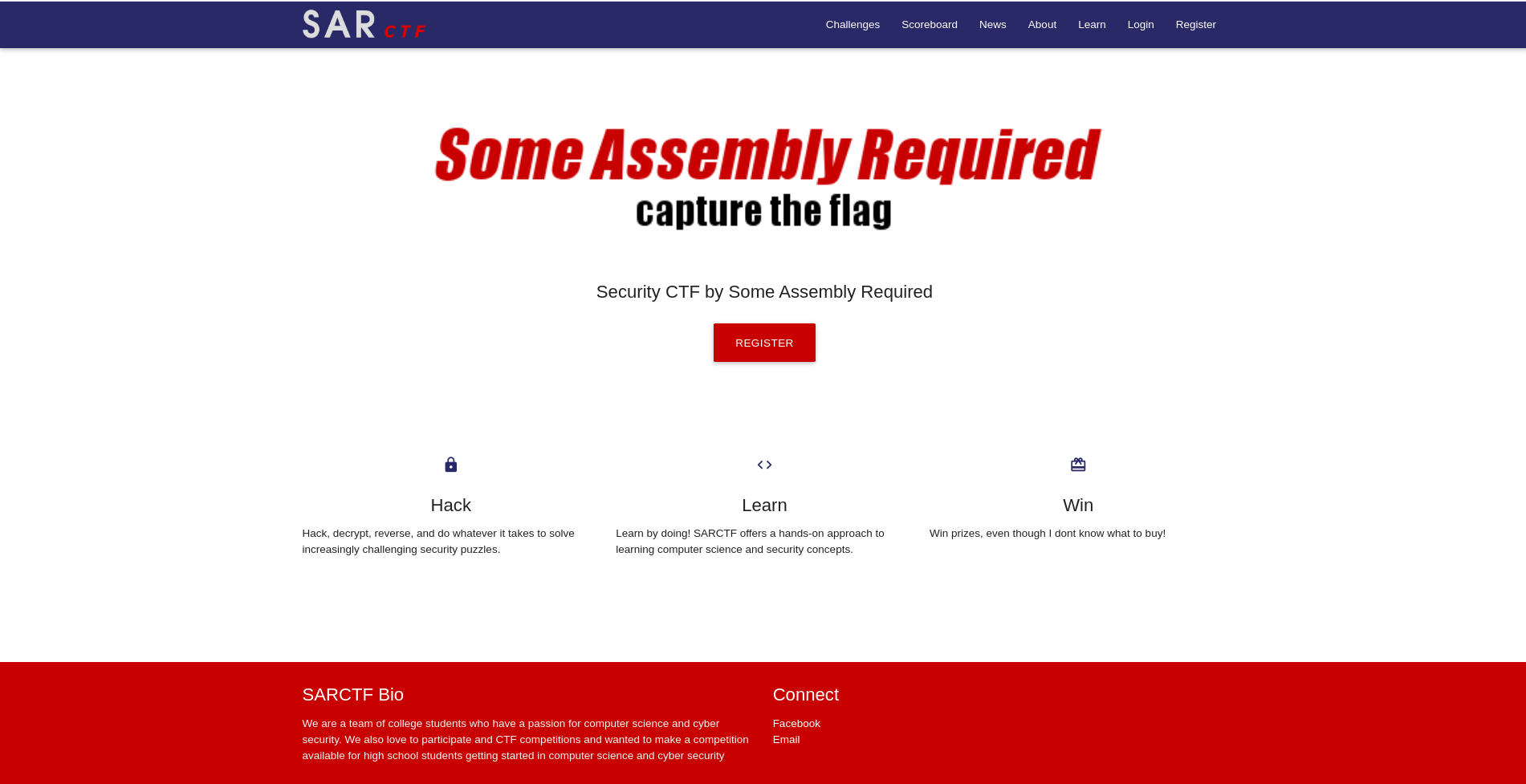
We had a navbar containing links to:
- Challenges
- Scoreboard
- News
- About
- Learn
- Login
- Register
Register Page
A couple extra fields were added since the first version. An affliation field and a password confirmation field.
 
Login Page
Login Page was a seperate page unlike the orginal version where you could login from any page.
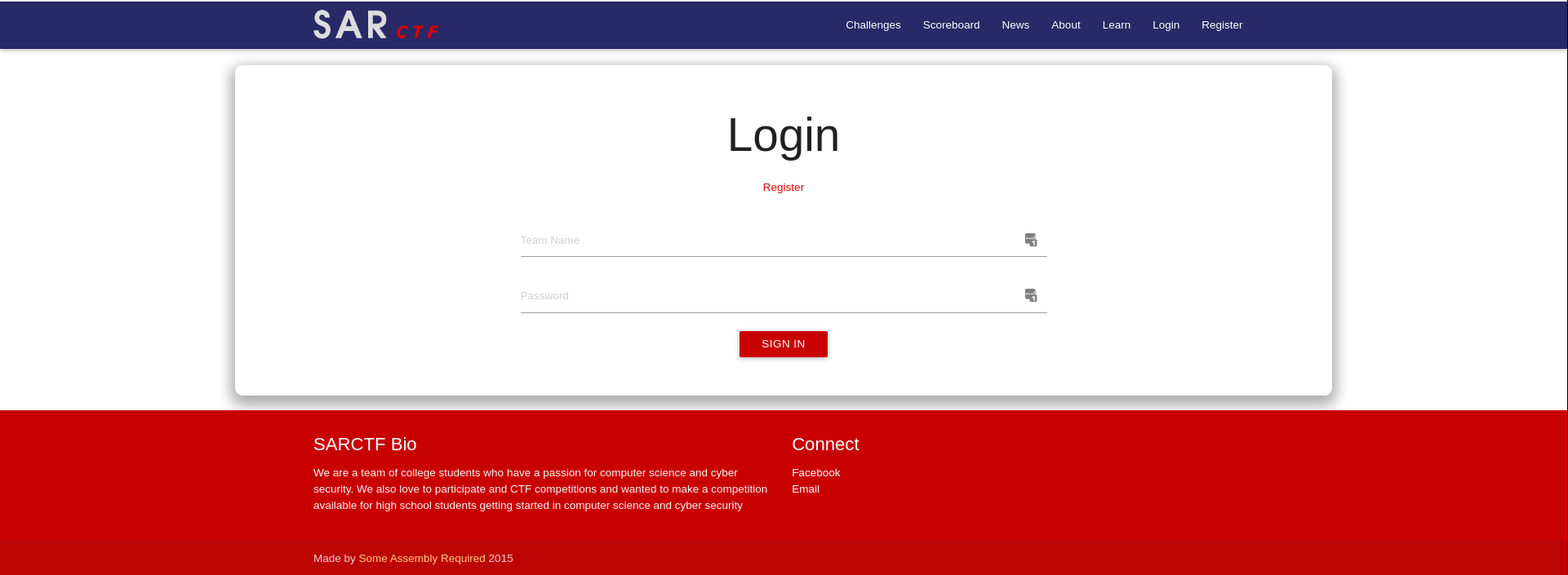
Logging in redirects to the challenges page.
Challenges Page
Again, challenge categories were hardcoded.
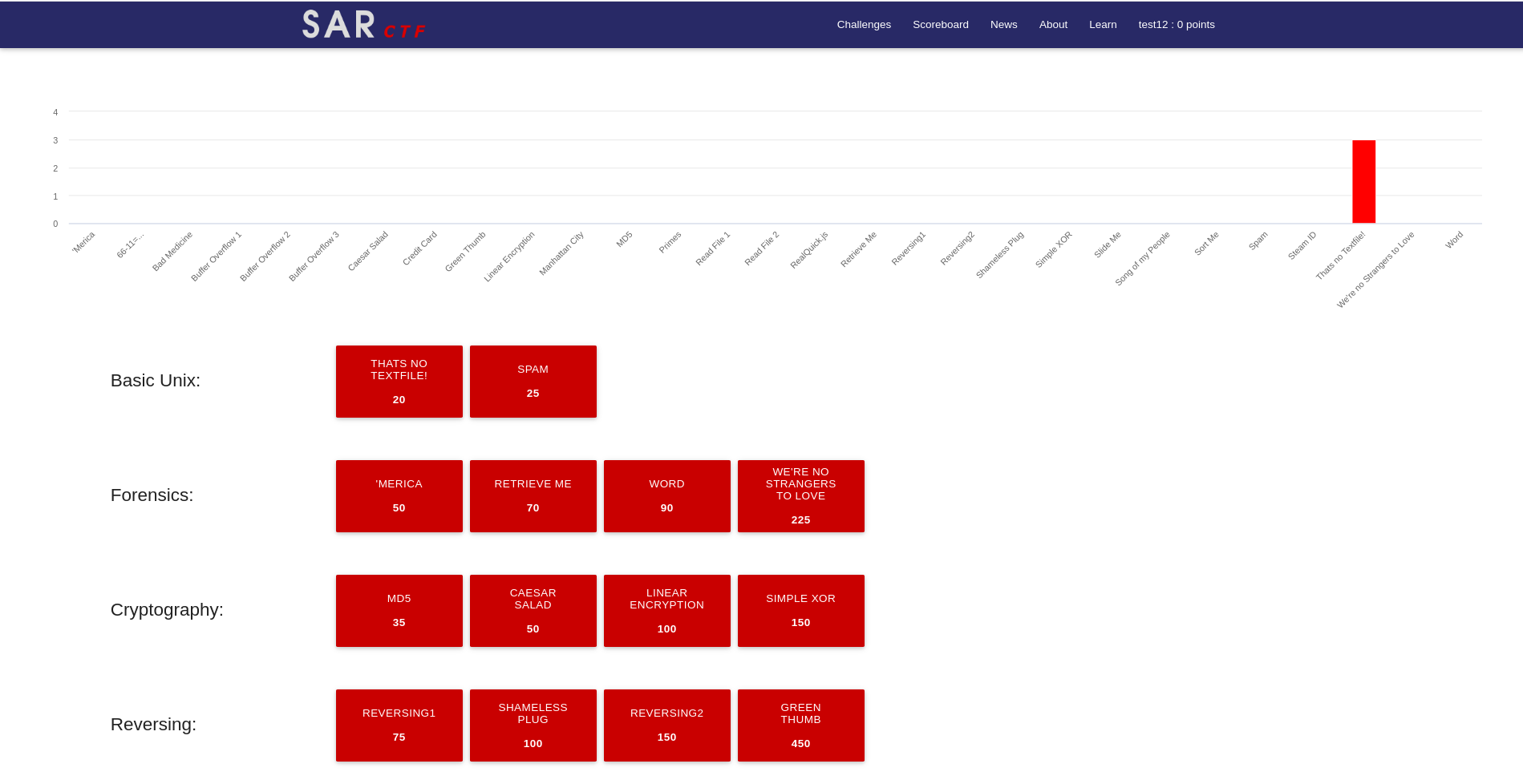
A graph at the top was added to show solve counts for each challenge.
Clicking a challenge box this time lead to a challenge page.
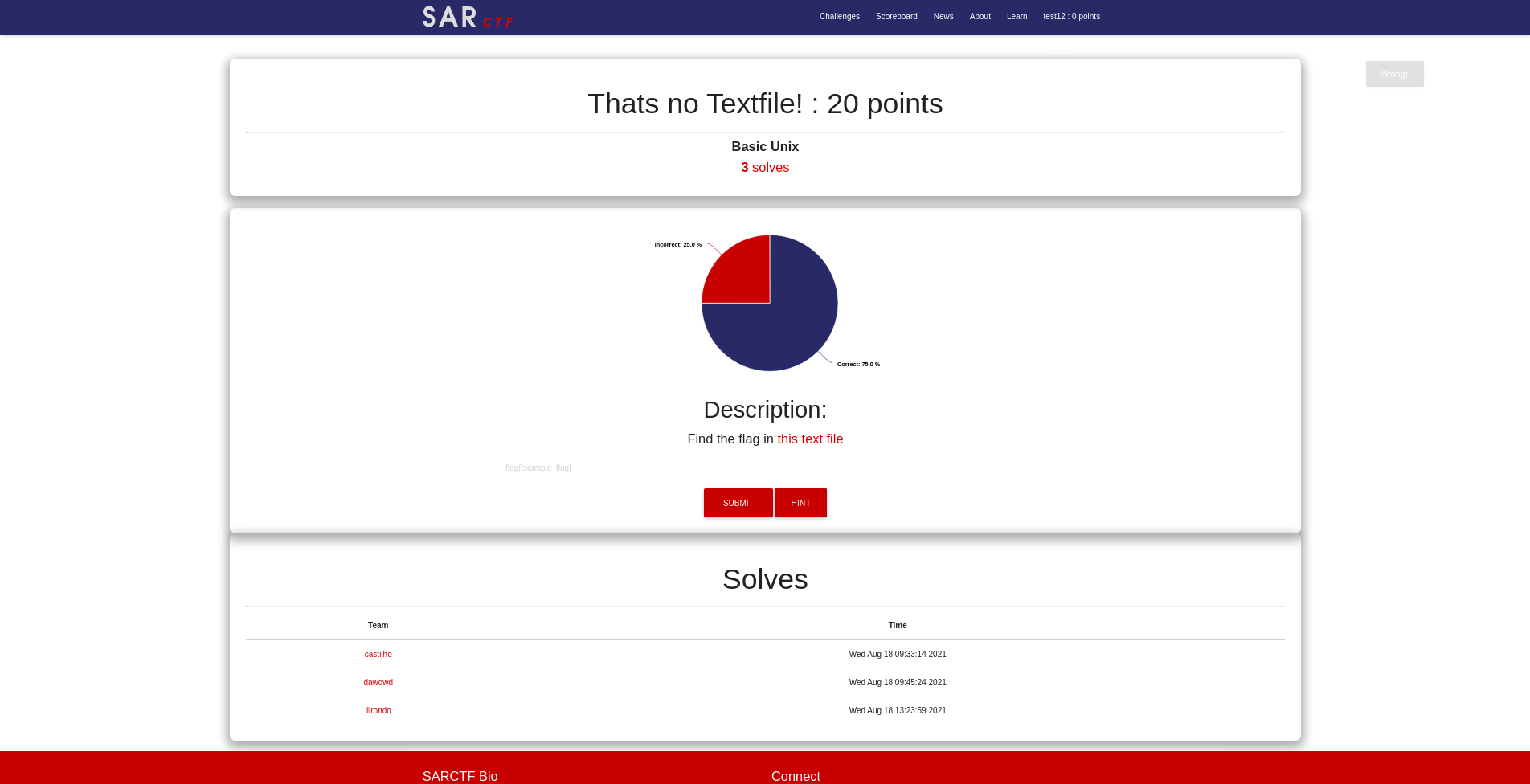
A graph was added to show correct/incorrect submissions and this time individual flag submission forms and hints button.

The schema for a challenge is:
create_table "challenges", force: true do |t|
t.string "title"
t.string "description"
t.integer "value"
t.string "hint"
t.integer "solves"
t.integer "submits"
t.string "category"
t.datetime "created_at"
t.datetime "updated_at"
end
And there was a relationship with the teams table:
create_table "team_challenges", force: true do |t|
t.integer "team_id"
t.integer "challenge_id"
t.datetime "created_at"
t.datetime "updated_at"
end
Notice how a challenge record does not include a flag. I don’t know why I didn’t create a real relationship between a challenge and a flag.
The flag structure was:
create_table "flags", force: true do |t|
t.string "grader"
t.integer "challenge_id"
t.datetime "created_at"
t.datetime "updated_at"
end
A flag was associated to a challenge by its challenge id and contained a path to a grader. A grader was created for each challenge. An example of a grader is:
class Grader
def check(guess)
guess = guess.downcase
if guess=="flag{therac-25}"
return true
elsif guess == "flag{therac 25}"
return true
elsif guess == "flag{therac25}"
return true
elsif guess=="therac-25"
return true
elsif guess == "therac 25"
return true
elsif guess == "therac25"
return true
else
return false
end
end
end
This allowed for multiple ways to validate if a flag could be correct.
An example of creating a challenge through ruby is:
Challenge.create("title"=>"Song of my People","description"=>"I am a <a href='/challenges/songofmypeople.wav' target='_blank'>Robot</a>","hint"=>"I speak 1s and 0s","value"=>175,"solves"=>0,"category"=>"Misc").flag = Flag.create("grader"=>"songofmypeople.rb")
From the solves list on the challenge page, you can navigate to their team page.
Team Page
Team Page contains a couple graphs and a list of the solved challenges.
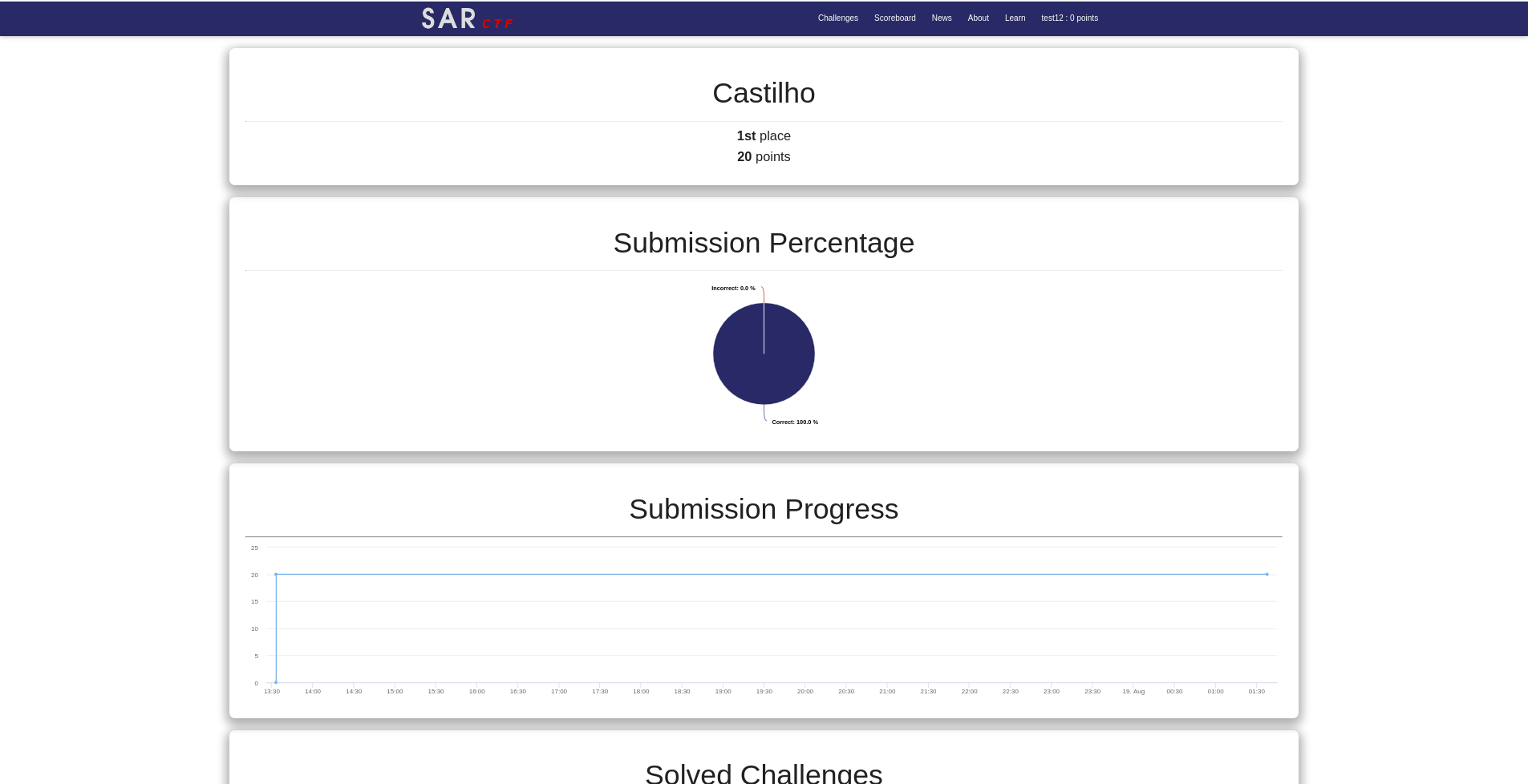

The challenge links back to the challenge page.
Scoreboard
The scoreboard shows a graph of the solve times of the top 5 players.
The admin account is shown on the graph but hidden on the scoreboard.
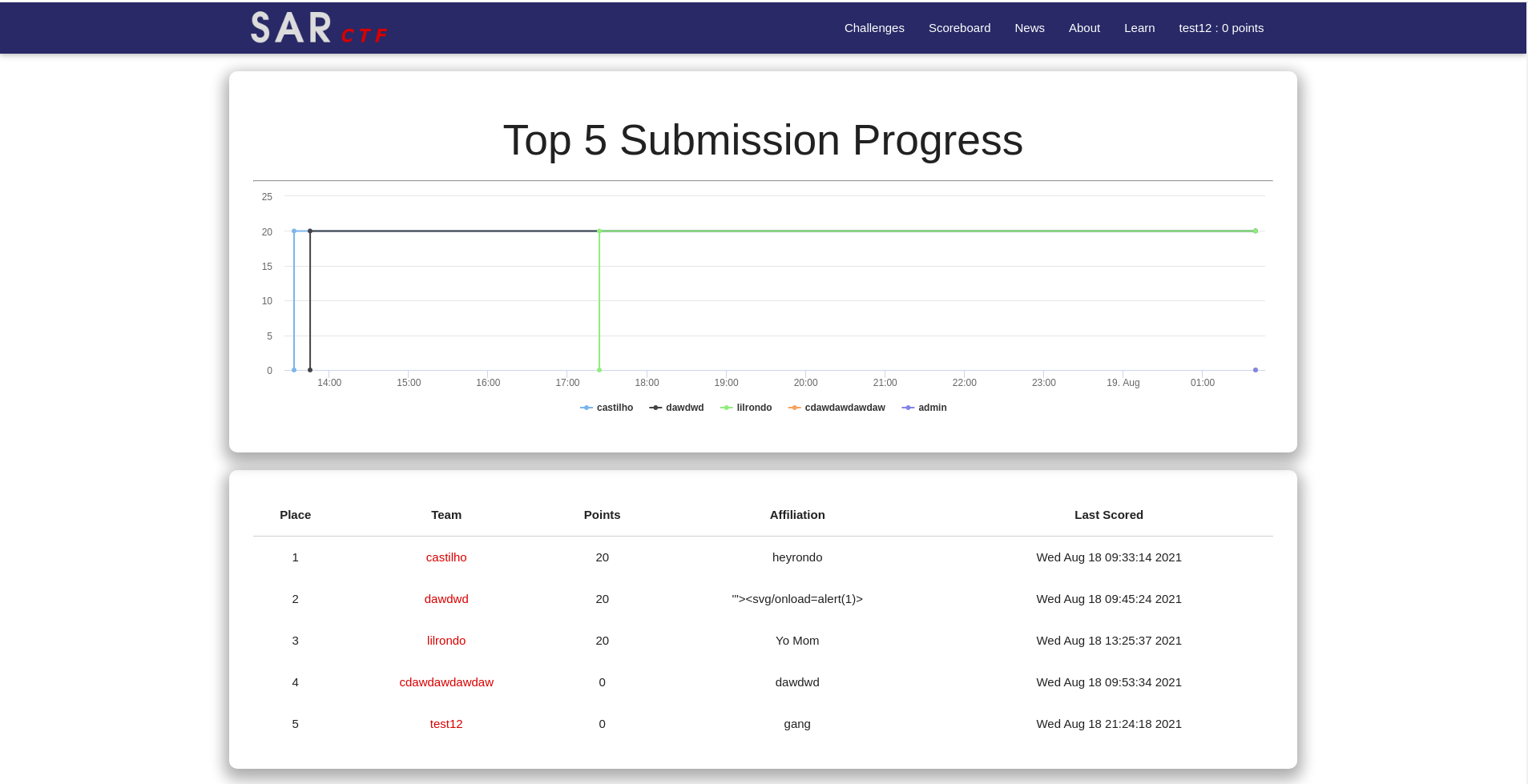
Clicking a team on the scoreboard links to their team page.
News
The news schema is pretty similar to the orginal version but an author field is added:
create_table "news", force: true do |t|
t.string "author"
t.string "title"
t.string "text"
t.datetime "created_at"
t.datetime "updated_at"
end
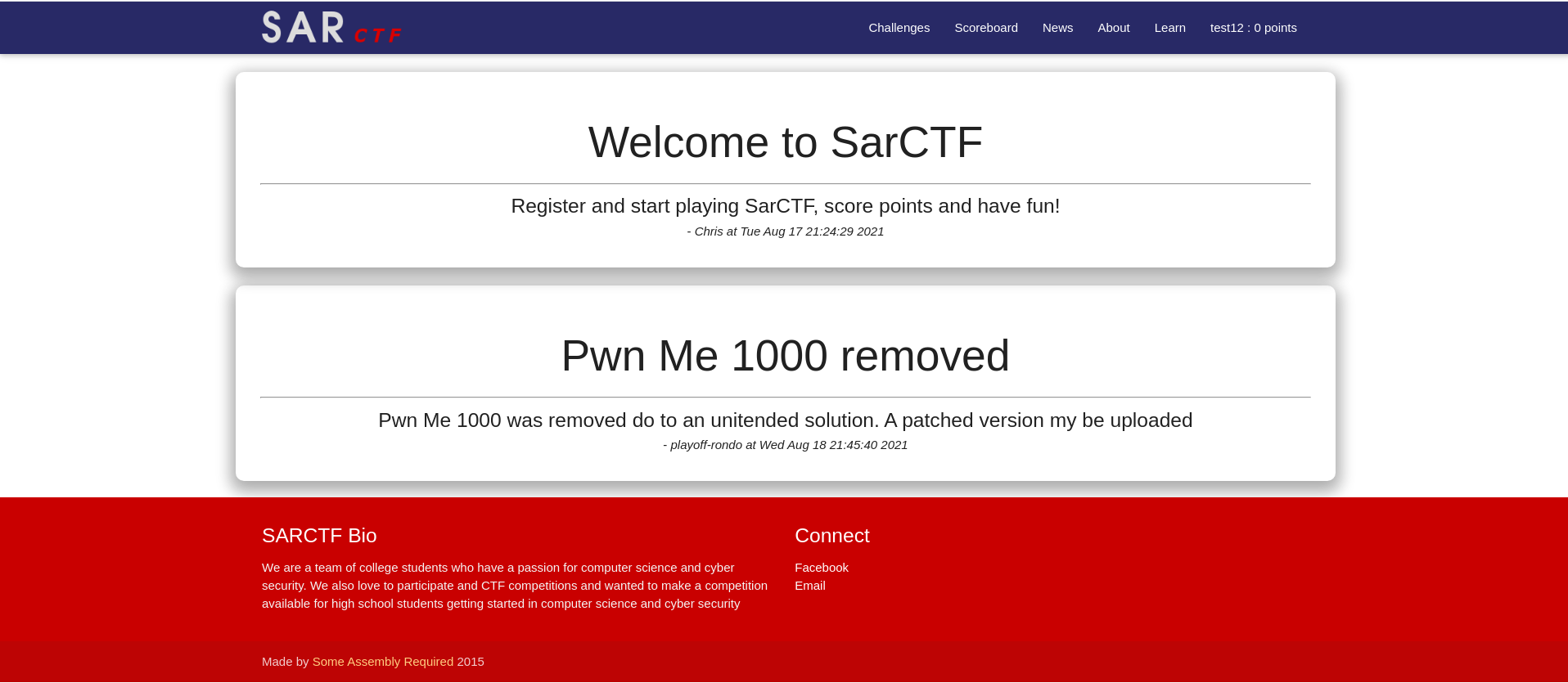
Not sure why I flipped it this time and newer posts were placed at the bottom.
About
About page just had info about what is a ctf and what the rules were.
Learn
Taking from picoCTF, where they had a learn page. We attempted to write a little about each category. Pretty much none of this information is useful.
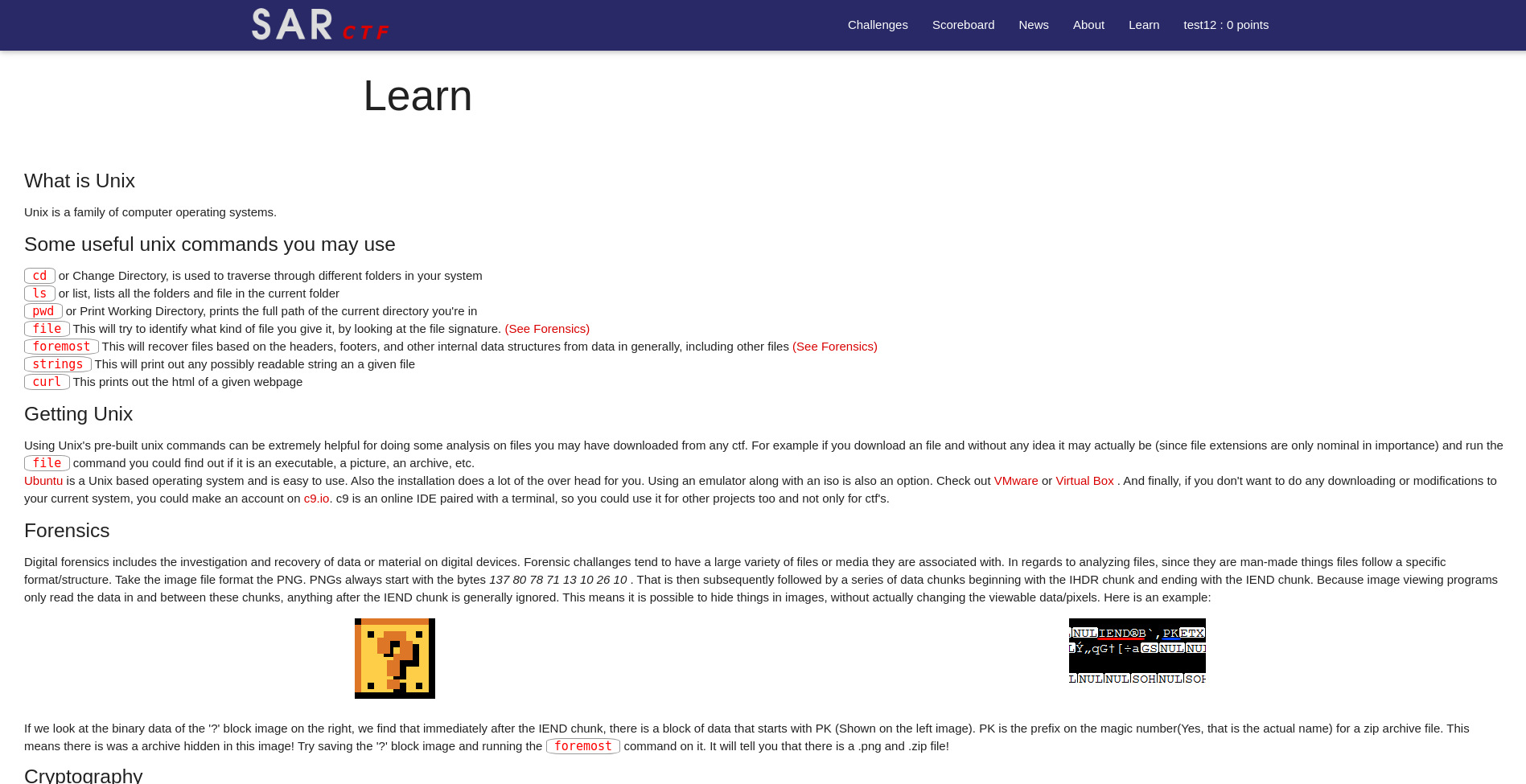
Lessons Learned
I hate webdev, still missing a lot of features that standard for most ctf platforms. Ruby on Rails is pretty cool and as much as I hate webdev, I sorta want to work with Rails and see what cool features they have added in the past few years.
We never ran a real ctf off this platform so who knows what bugs and edge cases I missed.
Still need an admin panel, I actually had some code set up for an admin panel but really never implemented anything.
<% if current_team %>
<li><a style="color: #C90000" href="/team/<%=current_team.id%>"> <%=current_team.name%> : <%=current_team.score%> points </a></li>
<li> <a href="/logout" class="nav_link" >logout</a></li>
<% if current_team.is_admin==1 %>
<li><a href="/admin">Admin Panel</a></li>
<%end%>
<%else%>